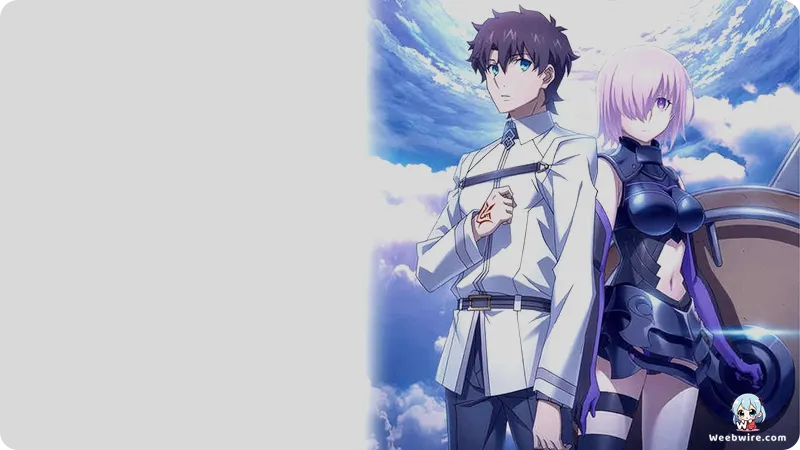FGO's Foundation: The Crucial Production Trivia Behind Fate/Grand Order: First Order

The 2016 film, Fate/Grand Order: First Order, holds a crucial, yet often overlooked, position as the initial cinematic adaptation of the globally successful mobile game franchise. This 90-minute feature was tasked with the significant responsibility of introducing the complex lore of the Grand Order universe while simultaneously translating a lengthy, interactive tutorial sequence into a compelling, high-stakes narrative. This requirement necessitated substantial narrative adjustments, leading to several notable insights regarding the film's challenging production background.
The Challenge of Condensing the Fuyuki Singularity
One of the most immediate and critical hurdles faced by the production team at Studio Lay-duce was the issue of pacing and condensation. The film adapts the Fuyuki Singularity, which serves as the game's initial chapter. In its original form, this sequence functions as an extensive tutorial, featuring prolonged dialogue, system explanations, and character introductions that can span many hours of gameplay. Lay-duce was compelled to compress this dense informational load into a standard feature-length runtime, demanding extreme efficiency in its storytelling approach.
This compression required actively restructuring the narrative flow, prioritizing relentless action and urgent emotional stakes over comprehensive lore dissemination. For example, complex elements such as the operation of Chaldea and the technicalities of the Rayshift process are conveyed through swift, often visually driven exposition. This contrasts sharply with the source material's deliberate, multi-dialogue box explanations. This acceleration fundamentally altered character dynamics, necessitating immediate action rather than the gradual relationship building present in the game.
Lay-duce’s Monumental Task
A second compelling aspect of the film's production centers on the choice of the animation house itself. While the Fate franchise is often associated with visual powerhouses like Ufotable, the inaugural adaptation of the mobile game's prologue was entrusted to Lay-duce. As a relatively smaller studio at the time, accepting the adaptation of a property as massive and high-profile as Fate/Grand Order represented a monumental professional undertaking.
This decision placed considerable pressure on the animation staff to deliver action sequences, particularly the Servants' powerful abilities and Noble Phantasms, that could successfully meet the high visual standard established by preceding Fate entries. The skillful execution of the climactic battle sequences ultimately validated Lay-duce’s capabilities, significantly boosting their standing within the highly competitive industry.
Adapting the Silent Protagonist
Furthermore, the success of the film hinged on a critical creative deviation concerning the protagonist, Ritsuka Fujimaru. In the mobile game, Ritsuka is designed as a silent, customizable avatar intended for player immersion, initially portrayed as unremarkable. However, a silent lead rarely translates effectively into cinematic storytelling.
The creative team therefore had to inject Ritsuka with defined personality traits, motivations, and vocal reactions. They opted to present him as initially overwhelmed and somewhat reluctant. This deliberate choice made his eventual determination and heroism feel relatable and earned by the viewing audience. This necessary characterization represents an essential departure from the source material’s design philosophy, serving as a powerful example of how interactive media must be fundamentally adapted for success in a passive format.

Foreshadowing and Establishing Stakes
Finally, the characterization of Mash Kyrielight, the Demi-Servant Shielder, is rich with layered details regarding her true identity. While players eventually discover she is fused with Sir Galahad, the film adaptation carefully weaves in subtle clues. Her Noble Phantasm, 'Lord Chaldea,' manifests as an impenetrable shield, echoing Galahad's legendary purity and protective nature. These visual and narrative choices subtly foreshadow her deep connection to Arthurian legend.
Equally critical is the role of Olga Marie Animusphere, the Director of Chaldea. Her brutally short and tragic fate in First Order establishes the immediate, severe stakes required to galvanize the main characters. This decisive narrative choice, committing fully to her immediate demise despite hints of a larger role in supplemental materials, proved that no character was safe, thus cementing the unforgiving tone that defines the entire Fate/Grand Order saga.
Credits
Fate/Grand Order: First Order
Author
Kinoko Nasu (TYPE-MOON)
Cover Art
Takashi Takeuchi
Studio
Lay-duce
Publisher
TYPE-MOON
Producers





